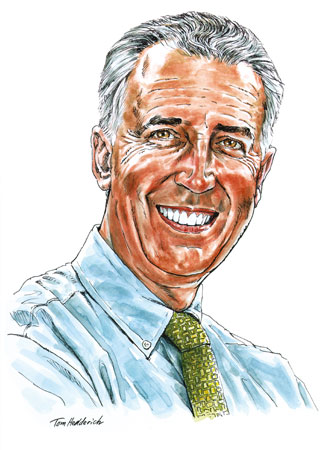The EV fiasco was predictable and serves as a cautionary tale for streamers. Forcing an untimely dismantle of the linear model and pushing for a premature adoption of an on-demand model will only generate more losses, more mergers, and more layoffs.

In September 2022, a year before U.S. car executives were looking to cash in on their Electric Vehicle (EV) bets, being a so-called “know-it-all,” I wrote for a few Italian publications about “The Exaggerated Promises of Electric Cars.” This warning could be a cautionary tale for those streamers who, after losing money for so long, now intend to invest huge amounts of cash in new sports ventures.
As for the EVs, it is necessary to point out that I’m not a car analyst or even an auto mechanic, but simply a driver who, living in New York City, doesn’t need to own a car, but simply rents them when needed. As for the streaming business, I’m just an observer who uses basic amounts of common sense.
My reluctance towards EVs started even earlier, in 2019, at the rental stations of the LAX airport, where, after a first experience with an EV, I exchanged it for a gas-engine model, and in subsequent rentals for a hybrid (gas and EV) car.
Not only are EVs problematic to recharge, but also to drive, as they tend to be complex to operate for someone without an IT degree. Also, after a talk with environmental experts I agreed with them that the future was not in battery-powered vehicles, but hydrogen fuel, which, in effect is a clean version of the gas-engine fuel and doesn’t present the aforementioned challenges associated with EVs. Plus, I understood that, while recharging a battery-powered engine requires the same energy as a gas-powered car (i.e., a full tank requiring 500 kWh/1,000 Watt/hour), the hydrogen model requires much less energy.
Nonetheless, even though U.S. car dealers have been downgrading their EV commitments and Toyota Motor chairman Akio Toyoda cautioned carmakers to be cautious with EVs and instead suggested moving to hybrids, American car executives continued to be buoyant about EVs. In May 2023, Ford CEO Jim Farley even expanded an EV model output. Similarly, in July 2023, GM’s CEO Mary Barra told analysts that consumers wanted their EVs.
Today, however, Ford is deferring $12 billion in EV investments and instead focusing on hybrid production, and GM is delaying a $4 billion investment in EV pickup trucks, calling the EV transition “bumpy.” This is because “people are finally seeing reality,” Toyoda is reported to have said.
Moving on to the streaming business, my skepticism towards the model that was used started as early as 2017 when I saw indications of billions of dollars being tossed out in the hopes of cashing in on the development of the on-demand subscription TV service that was thought to require exclusivity, but became an expensive and money-losing proposition.
Indeed, as early as 2017 VideoAge was writing about the unsustainable business model that streaming services had developed (for example, “People Who Get Rid of Cable TV Might Not Save Money,” June 2017 and “Netflix’s Success on Wall Street and Main Street is Not Reflected on Balance Sheets,” October 2017.)
Then, in a VideoAge Daily at MIPCOM 2018 we pointed out how Wall Street “is forcing production models to change to the point that producers now need money up front to produce, since today’s content needs to arrive fully financed.” This is the model developed by Netflix. This model then gave rise to the current co-financing content production model that is replacing the traditional co-production model, and the rush to mergers, acquisitions, integrations, and joint ventures. These latest are especially for sports channels, and in this regard, I’m not the only critic, since an article from the opinion page of The Wall Street Journal by Holman W. Jenkins, Jr. was titled “New Sports App Won’t Last Long.”
The moral of the story is that media companies should follow the car manufacturers and adopt a hybrid model: Gas and EV for cars (while waiting for hydrogen fuel), and linear and on-demand for TV outlets. Forcing an untimely dismantle of the linear model and pushing for a premature adoption of the on-demand model will only generate more losses, more mergers, and more layoffs.
(By Dom Serafini)
Audio Version (a DV Works service)

Leave A Comment